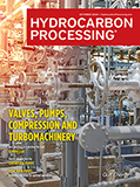Environment & Safety
HP Automation Strategies: ISA108 Intelligent Device Management focuses on work processes
Over the last decade, field instrumentation and analytical chemistry device suppliers have made tremendous progress incorporating value-added functionality into intelligent devices. This includes enha..
HP News: Process safety pioneer passes away
   Trevor Kletz was a giant   in the field of process safety.  One of the founders and leaders of process safety in thought and practice, Professor Trevor Kletz, died on ..
Chemical-grade operation—or not?
The quality of transportation fuels has evolved. Earlier, the fuel quality was based on octane to power larger engines for automobiles and cetane for commercial trucks. As lead was phased out of gasol..
US achieves new milestones with latest hydrogen, fuel cell technologies
With support from the US Department of Energy, private industry and the DOE’s national laboratories have already achieved significant advances in fuel cell and hydrogen technologies.
Key pipeline companies in North America take lead on safety research
North American pipeline industry leaders Enbridge and TransCanada have reaffirmed their commitment to pipeline safety and emergency response by agreeing to research regarding leak detection.
US safety board seeks overhaul of California refinery regulations
After the August 2012 fire at Chevron's Richmond refinery, the CSB says it wants to replace reactive and activity-based regulations with a rigorous, performance-based scheme.
Design a staggered depressurization sequence for flare systems
Emergency depressurization is one of the most important design provisions for safeguarding facilities in case of an emergency. To overcome limitations of flare system capacity during such a scenario, depressurization can be practiced in a sequential manner. Presented here are the criteria and calculation methods for designing sequential depressurization, along with guidelines for the implementation of recommended designs.
Rethink the hazards in your process
In designing process safety systems, “more” is not necessarily better. Advanced technology has created a mindset to over-install hardware to prevent or to reduce the risk of failure in hydro..
Consider process-based failure analysis methods for piping and equipment
Avoiding incident (or accident) recurrences at industrial systems is a long-standing problem, and it involves process safety strategies (PSSs). Incurring zero incidents is the ultimate goal for any st..
HP Editorial Comment: By the numbers
At times, engineers, bankers, scientists and accountants can be obsessed with numbers. Why? Because numbers are vital, especially in the design and operation of process units and equipment. Anniversar..

- ExxonMobil plans 1 Blbs/yr of advanced recycling by 2027 11/22
- Gauging the likely Trump effect on U.S. energy and power sectors 11/22
- Russia's Lukoil restoring cracker at NORSI refinery, gasoline output rising 11/22
- Nigeria's local currency crude sales fall short of target, Dangote refinery says 11/22
- U.S. October gasoline imports hit post-pandemic low on slump in European shipments 11/22
- Clean Hydrogen Works awards McDermott FEED contract for Ascension Clean Energy (ACE) project 11/21




